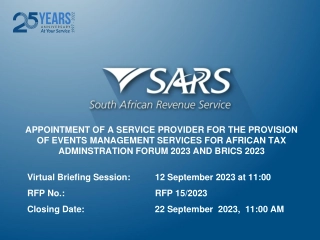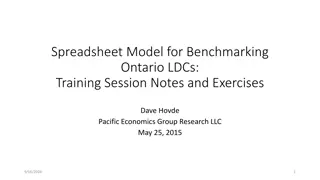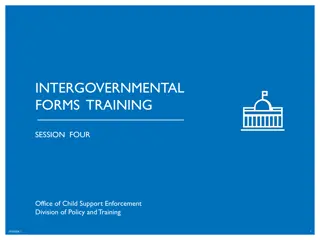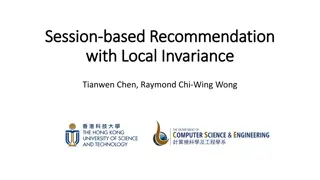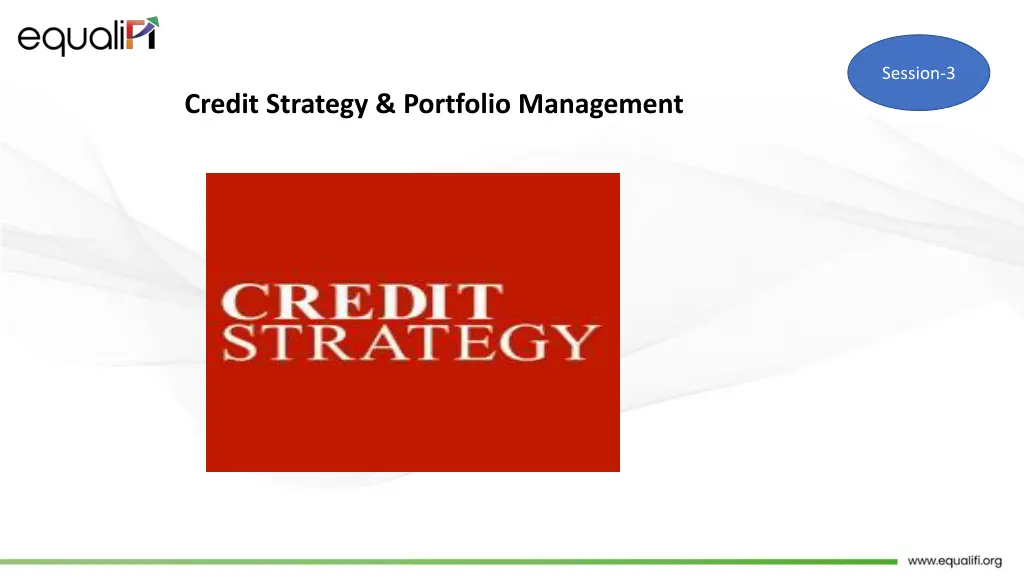
Understanding Portfolio Management and Strategies for Financial Success
Explore the world of portfolio management, the key components, risks involved, strategies, and techniques for effective management. Discover how asset allocation, diversification, risk management, and investment selection play crucial roles in achieving financial goals while balancing risk and return. Learn about passive portfolio strategies like buy-and-hold investing and indexing to maximize returns and minimize risks.
Download Presentation

Please find below an Image/Link to download the presentation.
The content on the website is provided AS IS for your information and personal use only. It may not be sold, licensed, or shared on other websites without obtaining consent from the author. If you encounter any issues during the download, it is possible that the publisher has removed the file from their server.
You are allowed to download the files provided on this website for personal or commercial use, subject to the condition that they are used lawfully. All files are the property of their respective owners.
The content on the website is provided AS IS for your information and personal use only. It may not be sold, licensed, or shared on other websites without obtaining consent from the author.
E N D
Presentation Transcript
Session-3 Credit Strategy & Portfolio Management
Portfolio Management: Portfolio management refers to the process of managing an investment portfolio to achieve specific financial goals while balancing risk and return. It involves making decisions regarding asset allocation, selecting individual securities or investments, and regularly monitoring and adjusting the portfolio based on market conditions and changing investment objectives. The concept of portfolio management is commonly applied in the context of financial investments, where individuals or institutions pool their money and invest in a variety of assets such as stocks, bonds, real estate, commodities, and derivatives. The primary objective is to maximize returns while minimizing risk through diversification and strategic decision-making.
Key Components of Portfolio Management: 1. Asset Allocation 2. Diversification 3. Risk Management 4. Investment Selection 5. Performance monitoring 6. Rebalancing 7. Active Vs Passive Management
Passive Portfolio Strategy Buy and hold investing is an investment strategy where investors purchase securities, such as stocks or bonds, with the intention of holding them for an extended period, typically years or even decades. The strategy is based on the belief that, over time, the market tends to increase in value, and the investor can benefit from long-term growth and compounding returns. Indexing in portfolio management refers to a passive investment strategy that aims to replicate the performance of a specific market index, such as the S&P 500 or the FTSE 100. Instead of attempting to outperform the market, index investors seek to match the returns of the chosen index by holding a diversified portfolio of securities that closely mirrors the index's composition.
Active Portfolio Strategy Interest rate anticipation is a portfolio management strategy that involves making investment decisions based on expectations of future changes in interest rates. Valuation analysis is a fundamental component of portfolio management that involves assessing the intrinsic value of securities or assets to make informed investment decisions. Credit analysis is a crucial component of portfolio management, particularly for fixed income investments, such as bonds or loans. It involves assessing the creditworthiness of a borrower or issuer and evaluating the risk of default on their debt obligations. Yield spread analysis is a technique used in portfolio management to evaluate and compare the relative value of different fixed income securities or credit instruments. It involves analyzing the yield spread, which is the difference in yield between two securities or a benchmark, to assess the credit risk and potential return of an investment.
Core Plus Management Strategy Enhanced indexing, also known as active indexing or smart beta investing, is an investment strategy that combines elements of both passive indexing and active management. It aims to deliver returns that outperform traditional market-cap-weighted indexes (passive indexing) while still maintaining some of the benefits of index investing, such as broad market exposure and low costs. Active/passive plus sectors is an investment strategy that combines elements of both active and passive management approaches with a focus on sector selection. It involves actively selecting and weighting sectors within a portfolio while using a passive or index-based approach for securities within each chosen sector.
Matched Funding Techniques A dedicated portfolio, also known as a segregated portfolio or separate account, is an investment portfolio that is customized and managed for a specific client or group of clients. It is distinct from a commingled or pooled investment vehicle, such as a mutual fund or exchange-traded fund (ETF), where investments are pooled together from multiple investors. Classical immunization, also known as duration immunization, is an investment strategy used to manage interest rate risk in a bond portfolio. It aims to ensure that the portfolio's value remains relatively stable in the face of changing interest rates. Horizon matching is an investment strategy that involves aligning the time horizon of investments with the anticipated cash flow needs or financial goals of an investor. The strategy aims to ensure that the investment portfolio is structured in a way that provides the necessary funds when they are needed, thereby reducing the risk of being forced to sell investments at unfavorable times.
Contingent & Structured Strategies Contingent immunization is an investment strategy that combines elements of both active management and immunization to balance the potential for investment growth with the need to protect against downside risk. The strategy is often used by bond portfolio managers to manage interest rate risk while maintaining the opportunity for higher returns. Structured management, also known as structured portfolio management, is an investment approach that combines multiple investment strategies or techniques to achieve specific investment objectives. It involves the systematic integration of various investment strategies, asset classes, and risk management techniques to optimize portfolio performance and manage risk.


